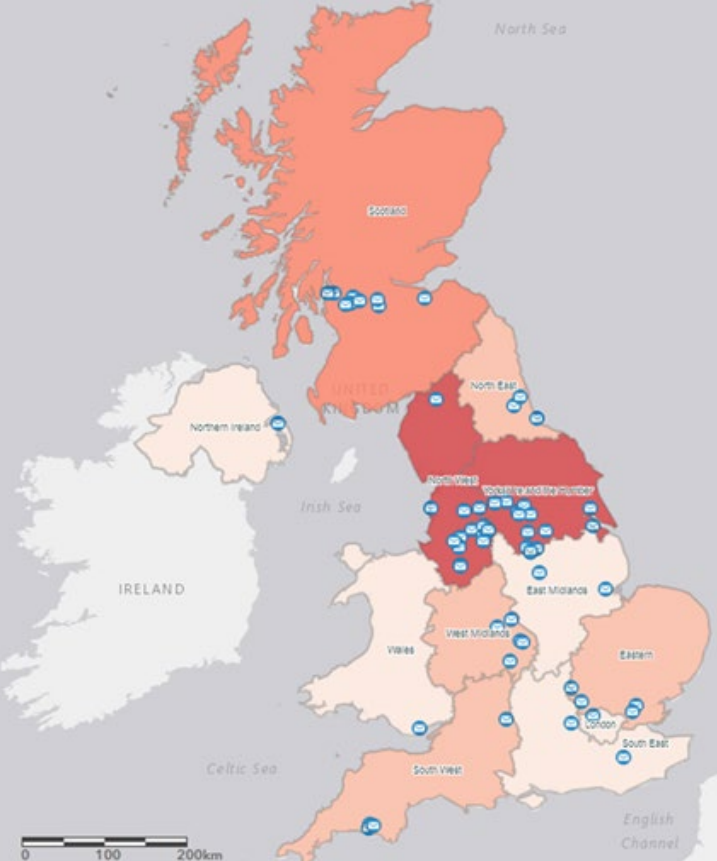 Once upon a time the vast majority of piracy and counterfeiting involved physical goods. Not even movies changed hands without first being recorded onto an analog videotape or more recently, optical media.
Once upon a time the vast majority of piracy and counterfeiting involved physical goods. Not even movies changed hands without first being recorded onto an analog videotape or more recently, optical media.
These days everything is done online. A movie is just another file to be silently downloaded and the days of buying hacked satellite cards from the small ads in specialist computer magazines are long gone. Armed with a web browser and a little patience, it's now possible for novices to have a pirate IPTV subscription up and running in no time. But for many, it's even more simple than that.
In 2022, many people are exposed to these subscriptions through friends or the marvels of social media. Sellers are easily found on Facebook where they tout their wares for all to see, either completely oblivious or entirely indifferent to the risks.
The problem is that this type of offense is viewed as fraud, a criminal offense. The chances of getting caught are admittedly low but, for the unlucky minority, a criminal conviction could be life-changing. Fortunately, in most cases rightsholders and the police seem to recognize that too.
Rise of the 'Knock-and-Warn'
This week the Federation Against Copyright Theft (FACT) announced another wave of enforcement action in the UK against people suspected of supplying illegal IPTV subscriptions.
FACT teamed up with officers from West Midlands and Warwickshire Police and instead of kicking doors off their hinges at 05:00, they took a more considered approach towards bringing any offending to an end.
Targeting homes in Alcester, Solihull, and Birmingham, investigators and police officers served so-called 'cease-and-desist' notices requiring suspects to cease any illegal activity with immediate effect, or face more serious consequences.
This may be an unpleasant experience for those served but given the possible alternatives, i.e a criminal prosecution by the police or even a private prosecution by FACT, a simple commitment not to keep breaking the law represents a simple get-out-of-jail-free card.
Cease-and-Desist Notices Are More Common in Fraud Cases
Documents seen by TorrentFreak indicate that police forces in the UK accept that cease-and-desist notices are little more than a tool in an administrative process. However, if they are issued appropriately, the fact that a notice has been served can provide evidence to support a subsequent criminal prosecution or even civil action.
Some forces say their responses to alleged fraud offenses are based on common sense and where it's possible to innovate with partners (in this case, FACT), that can be the preferred approach to bring alleged offending to an end. However, other factors also come into play, with police balancing the seriousness of the alleged crime, the resources available, and the prospect of getting a conviction.
The FACT Approach is Reportedly Successful
According to the Intellectual Property Office's IP Crime and Enforcement Report 2020-21 (pdf), FACT operations largely target lower-level offenders selling piracy-configued set-top boxes and IPTV subscriptions on social media.
In the year covered by the report, FACT claimed a success rate of 90%; 84 'cease and desist' notices were issued and 70 offenders fully complied with their terms. At that time, investigations into 14 cases continued with FACT warning that in some cases, prosecutions could follow.
The image below from that report shows the regions where notices were issued during 2020-21.

The individuals targeted this week are located in the region marked 'West Midlands', which sits just below the clear 'danger' area of Cheshire and to its right, Lancashire and Yorkshire.
FACT works with the Government Agency Intelligence Network (GAIN) to gather intelligence on suspects and believes that the warning process was appropriate to those targeted this week.
"This latest action targeted individuals who were promoting unauthorized access to premium television content, which affects broadcasters and rights owners in the UK and worldwide, causing financial harm to the industry and the economy," FACT's statement reads.
"Whilst all the individuals visited were operating at a relatively low level, the objective was to prevent them from undertaking further criminal activity, and to deter others from getting involved."
FACT says that further actions of a similar nature are planned to take place throughout 2022.
From: TF, for the latest news on copyright battles, piracy and more.
No comments:
Post a Comment